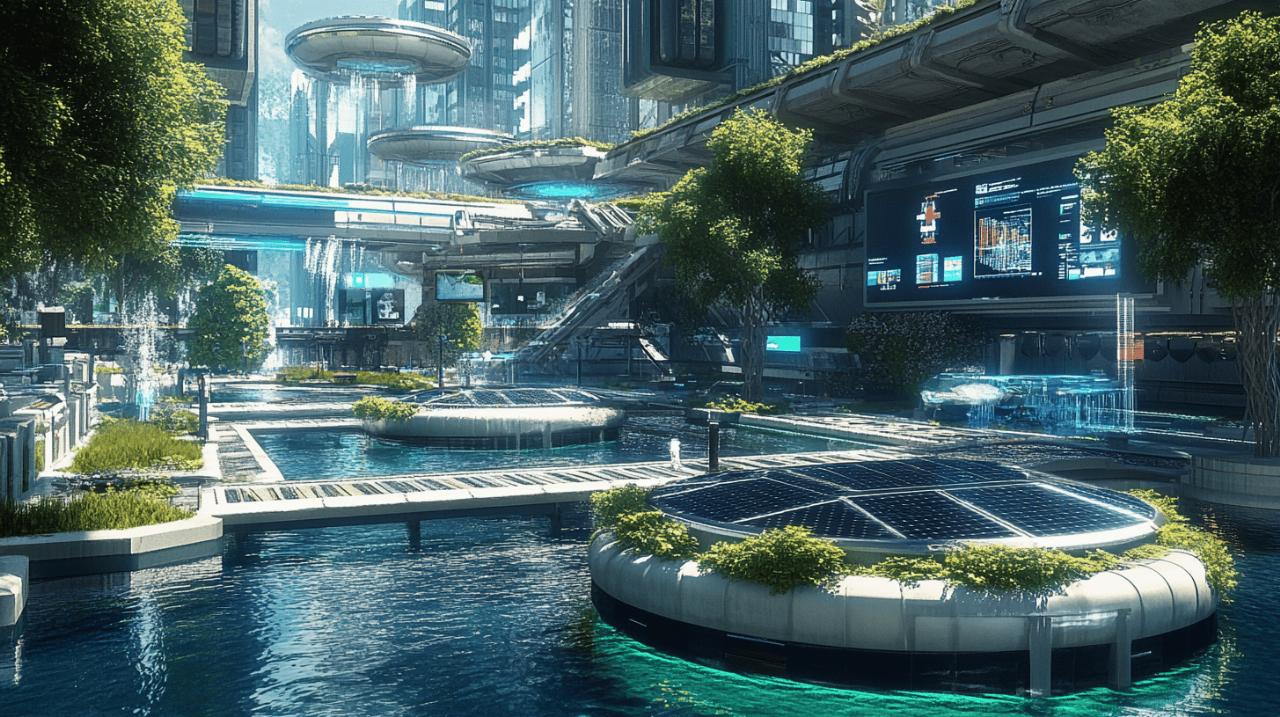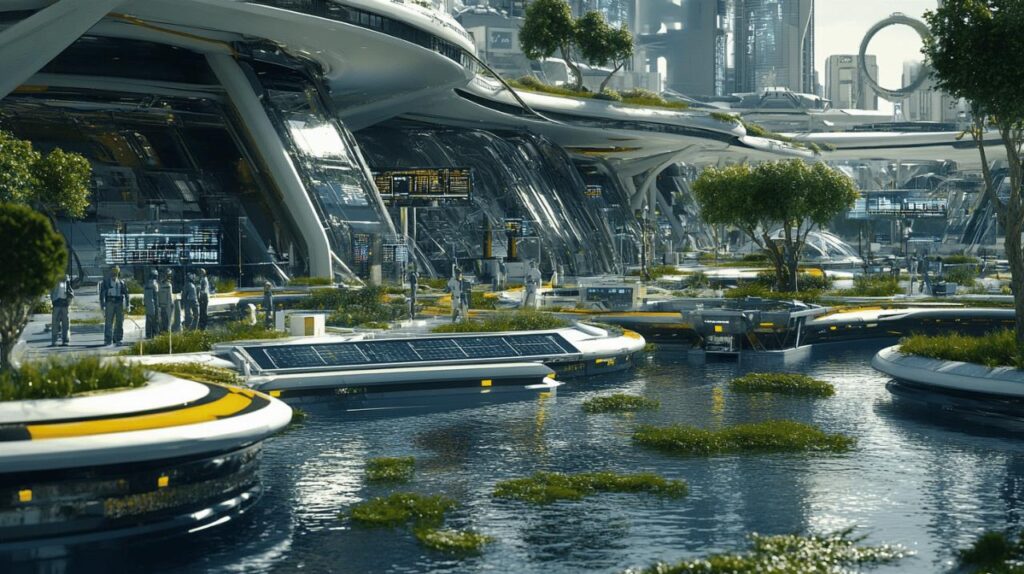Retention basins have emerged as crucial components in modern water management systems, offering multifaceted benefits that extend beyond simple water storage. These engineered structures play a vital role in our increasingly unpredictable climate, where extreme weather events demand innovative solutions for sustainable water management. By temporarily containing stormwater runoff, retention basins serve as effective tools for flood control while simultaneously contributing to water quality improvement and ecological enhancement. This article explores the comprehensive advantages of implementing retention basins as part of an integrated approach to water resource management.
Understanding retention basin fundamentals
Retention basins are carefully designed water management facilities that collect and store stormwater runoff from surrounding areas. Unlike their counterparts, these basins maintain a permanent pool of water even during dry periods, creating mini-ecosystems within urban or suburban landscapes. The presence of this constant water volume is what distinguishes them from other stormwater management solutions and enables many of their unique benefits. Visitors to https://www.residencelapergolastintino.it/ in Italy might notice how local water management systems have incorporated similar principles to harmonise with the Mediterranean climate’s seasonal rainfall patterns.
Key components and design principles
Effective retention basin design requires careful consideration of numerous factors including local rainfall patterns, expected runoff volumes, and downstream water conditions. The primary components include the basin itself, which must be appropriately sized to accommodate anticipated storm events, and the outlet structure that regulates water discharge. This outlet typically consists of devices such as orifice plates, weirs, or culverts that control the rate at which water leaves the basin. Additional elements often include a sediment forebay, which captures incoming sediment before it enters the main basin, and strategic vegetation that enhances both aesthetic appeal and functional performance.
How retention basins differ from detention systems
The fundamental distinction between retention and detention systems lies in their water storage approach. Retention basins permanently hold water, creating a constant aquatic environment that supports biological processes and wildlife habitat. Detention basins, conversely, are designed to empty completely after storm events, serving primarily as temporary storage facilities. This permanent water presence in retention basins enables ongoing natural filtration processes and creates stable ecosystems that contribute to biodiversity. The choice between these systems depends on specific project goals, available space, and local environmental conditions, with retention basins offering broader ecological benefits at the cost of requiring larger land areas.
Flood management capabilities
One of the most significant advantages of retention basins is their ability to mitigate flooding by temporarily storing excess stormwater and releasing it at controlled rates. This function is particularly valuable in urban environments where impervious surfaces like roads, parking lots, and buildings prevent natural ground absorption of rainfall. By capturing runoff during heavy precipitation events, these structures reduce the volume and velocity of water entering natural waterways, thereby decreasing erosion and preventing downstream flooding.
Controlling stormwater discharge rates
The outlet structure of a retention basin serves as its regulatory mechanism, determining how quickly water can exit the system. Engineers design these structures according to mathematical principles, often employing equations like the continuity equation and momentum equation to model water flow dynamics. For instance, a properly designed basin might reduce peak discharge rates by over 50%, transforming potentially destructive flash floods into manageable flows. This controlled release mimics natural watershed conditions by distributing runoff over extended periods, allowing downstream systems to process water volumes without becoming overwhelmed.
Case studies of successful flood mitigation
Numerous examples demonstrate the effectiveness of retention basins in real-world applications. In one documented case, a retention basin designed for a 100-hectare urban development successfully managed a design storm with 50 mm per hour rainfall intensity. The basin, with a 10,000 cubic metre capacity, limited outflow to 2 cubic metres per second, preventing potential flooding of downstream communities. Similar success stories exist worldwide, where thoughtfully implemented retention systems have protected infrastructure and natural environments from flood damage while simultaneously providing additional benefits to their communities.
Water quality enhancement
Beyond flood control, retention basins serve as natural water treatment facilities, improving the quality of runoff before it reaches rivers, lakes, or oceans. This purification occurs through various physical, biological, and chemical processes that work together to remove pollutants commonly found in urban and agricultural runoff. The importance of this function cannot be overstated, as untreated stormwater often contains contaminants that can harm aquatic ecosystems and compromise drinking water sources.
Natural filtration processes
The still water environment within retention basins creates ideal conditions for sedimentation, allowing suspended particles to settle to the bottom rather than flowing into natural waterways. Additionally, aquatic vegetation and algae absorb excess nutrients like nitrogen and phosphorus that might otherwise cause eutrophication in receiving waters. Bacterial communities that develop within the basin ecosystem further contribute to water purification by breaking down organic contaminants. These natural processes operate continuously, providing treatment without the energy requirements or technological complexity of conventional water treatment facilities.

Pollutant removal efficiency
Studies have shown that well-designed retention basins can achieve impressive pollutant removal rates. Sediment removal efficiencies often exceed 80%, while removal rates for nutrients, heavy metals, and organic compounds typically range from 30% to 60% depending on basin design and maintenance practices. These purification capabilities make retention basins particularly valuable in areas with high nutrient loadings or where receiving waters are especially sensitive to pollution. The combined action of sedimentation, plant uptake, and microbial decomposition creates a robust treatment system that addresses multiple categories of water contaminants simultaneously.
Groundwater replenishment benefits
As communities worldwide face increasing water scarcity challenges, the groundwater recharge function of retention basins has gained greater recognition. By holding water and allowing it to slowly infiltrate into the soil, these structures help replenish underground aquifers that supply drinking water, support agriculture, and maintain streamflow during dry periods. This function represents a vital link in the hydrologic cycle that has been disrupted by urbanisation and the proliferation of impervious surfaces.
Infiltration mechanics and aquifer recharge
The process of groundwater recharge through retention basins depends on local soil conditions, basin design, and maintenance practices. In areas with naturally permeable soils, water readily percolates downward to recharge aquifers. Where soils are less permeable, basin designs may incorporate special features to enhance infiltration, such as sand or gravel layers beneath the basin. However, in some cases where groundwater contamination is a concern or where high groundwater tables exist, clay liners may be used to limit infiltration. Engineers must carefully balance these considerations to optimise the groundwater replenishment function without creating other environmental problems.
Long-term impact on local water tables
Over time, strategically placed retention basins can significantly influence local groundwater dynamics. Regular infiltration from these structures can raise groundwater levels, potentially benefiting nearby wells and maintaining baseflow in streams during dry periods. This sustained contribution to groundwater resources represents a form of passive water banking that enhances community resilience to drought conditions. However, proper monitoring is essential to ensure that infiltrating water does not transport pollutants to groundwater and that rising water tables do not create problems for nearby structures or agricultural lands.
Ecological value of retention basins
Perhaps one of the most visible benefits of retention basins is their contribution to local ecology. The permanent water bodies they create become habitats for diverse plant and animal species, forming green islands within developed landscapes. These ecological oases provide numerous environmental services while enhancing the aesthetic and recreational value of the areas where they are located.
Habitat creation for wildlife
The stable aquatic environment of retention basins supports complex food webs that begin with microorganisms and extend to fish, amphibians, and birds. Shallow areas with emergent vegetation provide breeding grounds for many species, while deeper zones offer refuge during adverse conditions. The transition zones between water and land, known as riparian areas, are particularly rich in biodiversity. When thoughtfully designed with native vegetation and varied topography, retention basins can support impressive species diversity despite their engineered nature and primary water management function.
Biodiversity support in urban environments
In urban and suburban settings, retention basins often serve as biodiversity hotspots, providing habitat connectivity in otherwise fragmented landscapes. These mini-ecosystems can support pollinator populations, serve as stopovers for migratory birds, and maintain populations of beneficial insects that help control pests in surrounding areas. The ecological value extends beyond the basin boundaries through these mobile species, enhancing biodiversity throughout the broader landscape. Additionally, these natural elements within developed areas create opportunities for environmental education and foster community appreciation for local ecosystems.
Maintenance and optimisation
Despite their numerous benefits, retention basins require ongoing attention to maintain optimal performance. Without proper care, these systems can deteriorate, potentially creating problems rather than solutions. Regular maintenance ensures that basins continue to function as designed, delivering their full range of flood control, water quality, and ecological benefits throughout their operational lifespan.
Essential upkeep practices
Maintenance requirements include regular inspection of inlet and outlet structures to ensure they remain free of blockages, periodic removal of accumulated sediment that can reduce storage capacity, and management of vegetation to prevent overgrowth or invasion by undesirable species. Most guidelines recommend quarterly inspections at minimum, with more frequent checks during the rainy season or after major storm events. Sediment removal typically occurs on a multi-year cycle, depending on the rate of accumulation and the specific design of the basin. Proper disposal of removed sediment is important, as it may contain concentrated pollutants from the watershed.
Modernising existing basins for enhanced performance
Many older retention basins were designed primarily for flood control, with limited consideration of water quality improvement or ecological benefits. Retrofitting these facilities can enhance their performance across multiple objectives without requiring entirely new construction. Potential improvements include adding forebays to capture sediment, installing floating wetlands for additional pollutant removal, modifying outlet structures to optimise flow control, and introducing appropriate native vegetation to increase habitat value. These enhancements can often be implemented at relatively modest cost compared to new construction, making them attractive options for communities seeking to improve their water management infrastructure.

